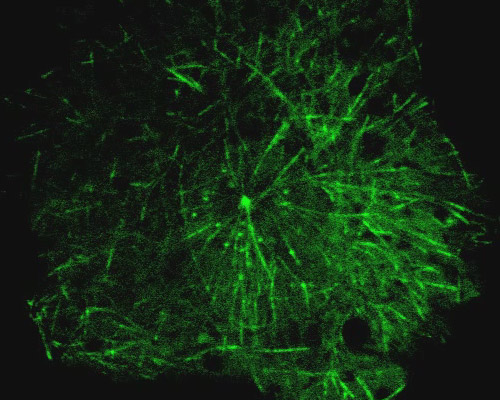Monkey Kidney Cells with mEmerald-MCAK

The protein encoded by the KIF2C gene, also known as MCAK (Mitotic Centromere-Associated Kinesin), is a member of a kinesin-like protein family. Proteins of this family are microtubule-dependent molecular motors that transfer organelles within cells and transport chromosomes during cell division and are important for anaphase chromosome segregation and may be necessary to coordinate the beginning of centromere separation. MCAK, however, belongs to an unusual subfamily of the kinesins that are able to travel toward both the plus and minus ends of microtubules. Studies indicate that during mitosis MCAK is essential for proper spindle formation.
The African green monkey kidney cells (CV-1 line) presented in the selected digital video were fluorescently labeled with mEmerald fused to MCAK. Named for the popular green gemstone, mEmerald exhibits peak excitation at 487 nanometers and peak emission at 509 nanometers. The fluorescent protein is a high-performance variant of the enhanced Aequorea derivative EGFP. The advantages of mEmerald over EGFP include improved brightness and photostability. The primary drawback to the use of mEmerald is its more prominent fast photobleaching component that could adversely affect results in certain applications.



